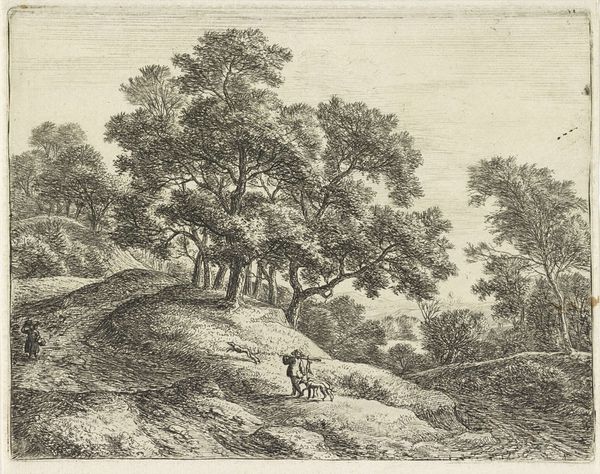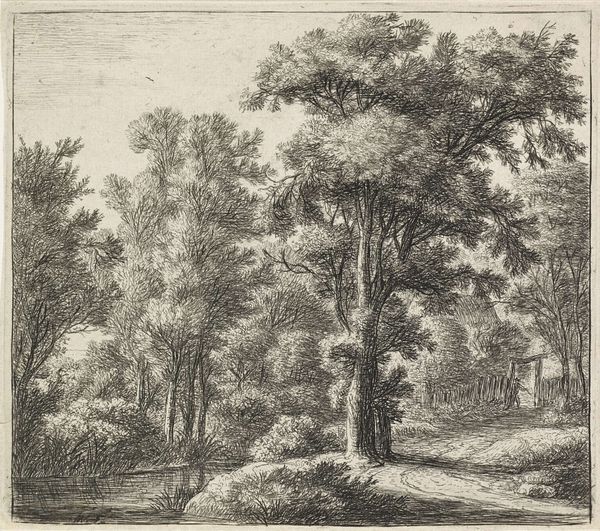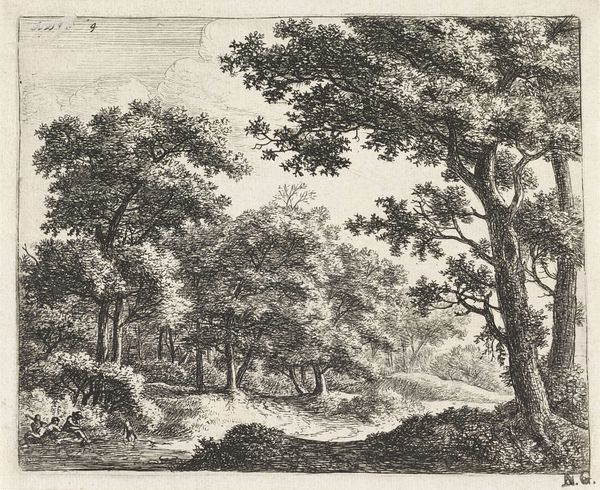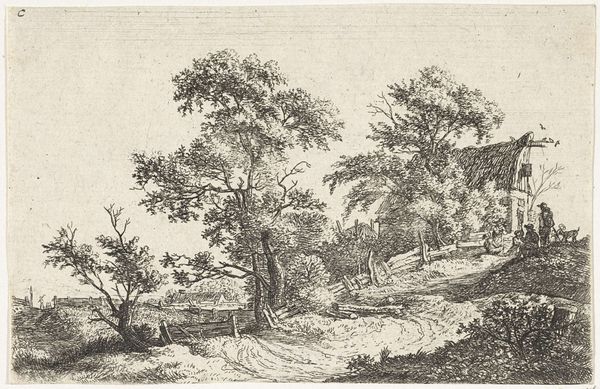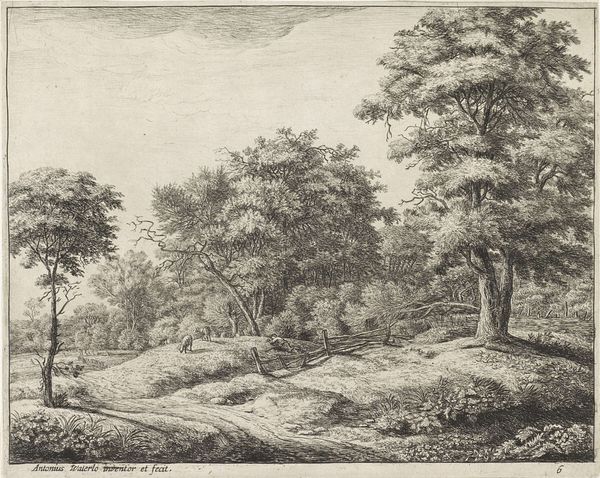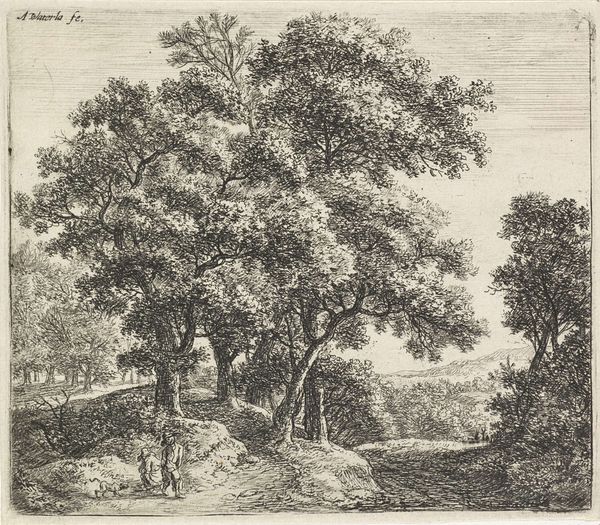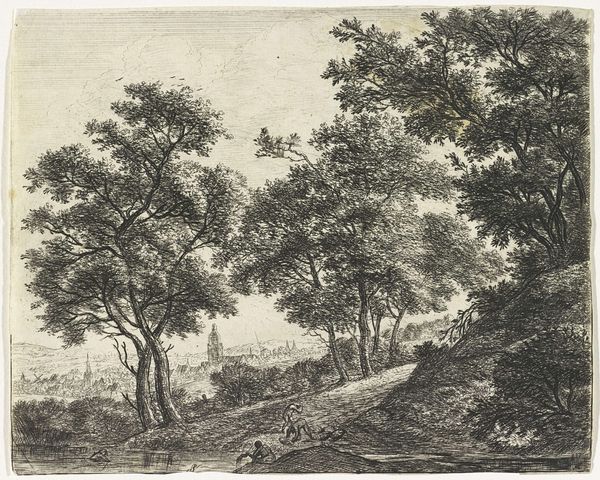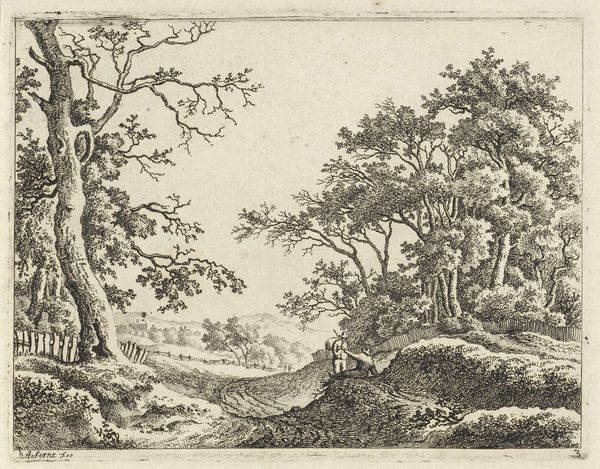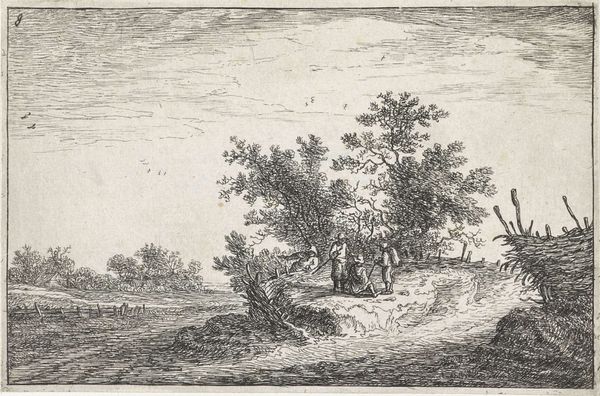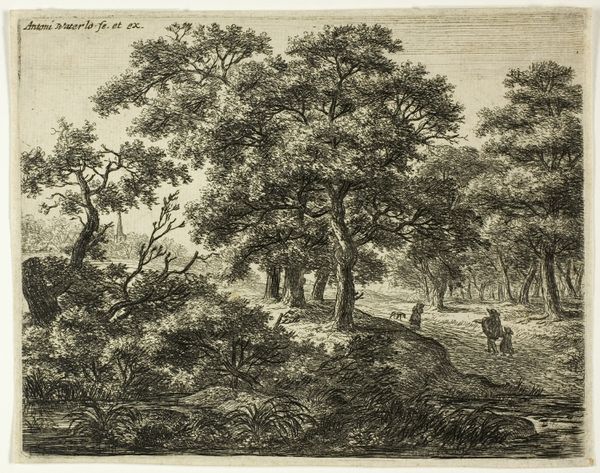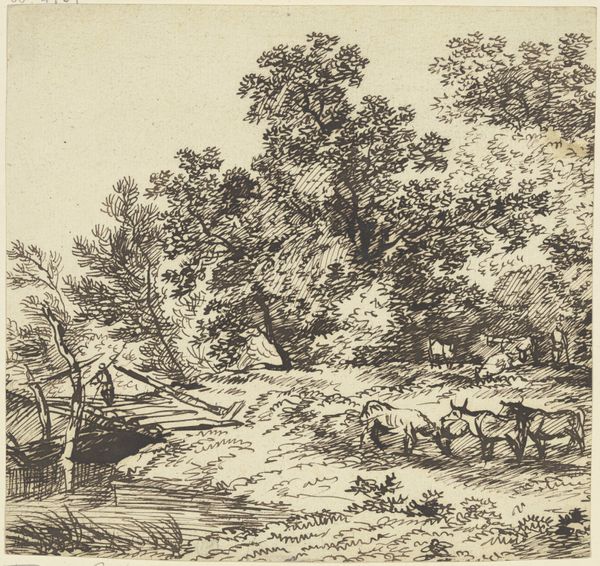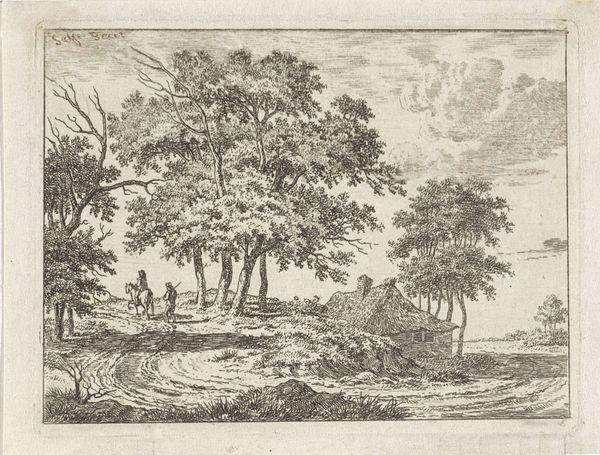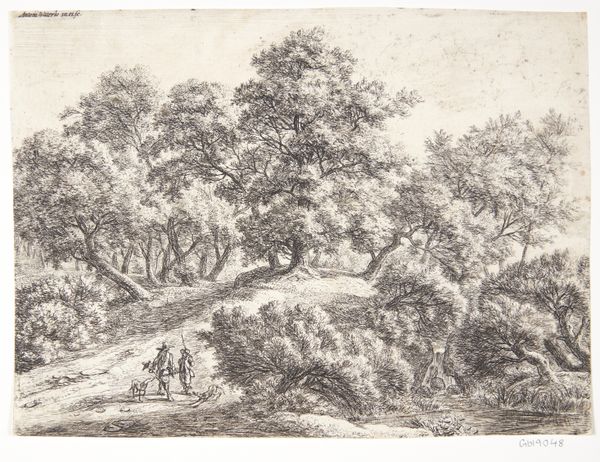
drawing, print, etching, paper
#
drawing
# print
#
etching
#
landscape
#
paper
#
genre-painting
Dimensions: 152 × 205 mm (image); 153 × 207 mm (sheet)
Copyright: Public Domain
Curator: Here we have Anthonie Waterloo’s etching, “The Falconer and the Hunter,” held here at the Art Institute of Chicago. It depicts a wooded scene, the print rendered with a very fine and precise line. Editor: It feels almost photographic in its detail, yet it has this dreamlike, somewhat melancholic atmosphere. The almost total lack of direct sunlight seems to contribute to that sense. Curator: Indeed. Waterloo was one of the most successful landscape etchers of his time. His works like this one catered to a growing urban population who were beginning to value nature for recreation and aesthetic appreciation. We have to remember that for centuries, wild nature was generally feared. Editor: Interesting. I am drawn to the two figures in the lower-left. The falconer carries his bird, while the hunter has a rifle slung across his back. The dog in the forefront at their feet seems like a depiction of faithfulness. One gets the impression that they're guardians or caretakers. What do you think that might imply about attitudes of the time toward the natural world? Curator: That is very perceptive. Here they are depicted not necessarily as conquerors but almost as custodians of a cultivated nature. Land ownership and the ability to move through and interact with a controlled nature signified status. Genre scenes, like this one, made visible the land management practices of elites and the natural rights they accrued as stewards. The forest itself seems manicured despite the abundance of trees. Editor: That idea of “cultivated nature” rings true, because the shapes almost feel like architectural renderings – particularly, those trees at the horizon appear cathedral-like. The figures also project ideas about social hierarchy. How do you see this image furthering societal or political views? Curator: Well, depictions of leisure like this naturalized aristocratic privilege. Landscapes that include these recreational figures also implied access, which for most people was limited, or denied. The print then serves as a marker of social rank in addition to functioning as a record of environmental impact. Editor: This print, in a sense, presents a window into a changing cultural perspective, as humans started positioning themselves within the frame of the natural world in novel ways. Curator: Precisely, we can also learn how deeply entwined social hierarchies were with the ownership and portrayal of landscapes at that time.
Comments
No comments
Be the first to comment and join the conversation on the ultimate creative platform.
